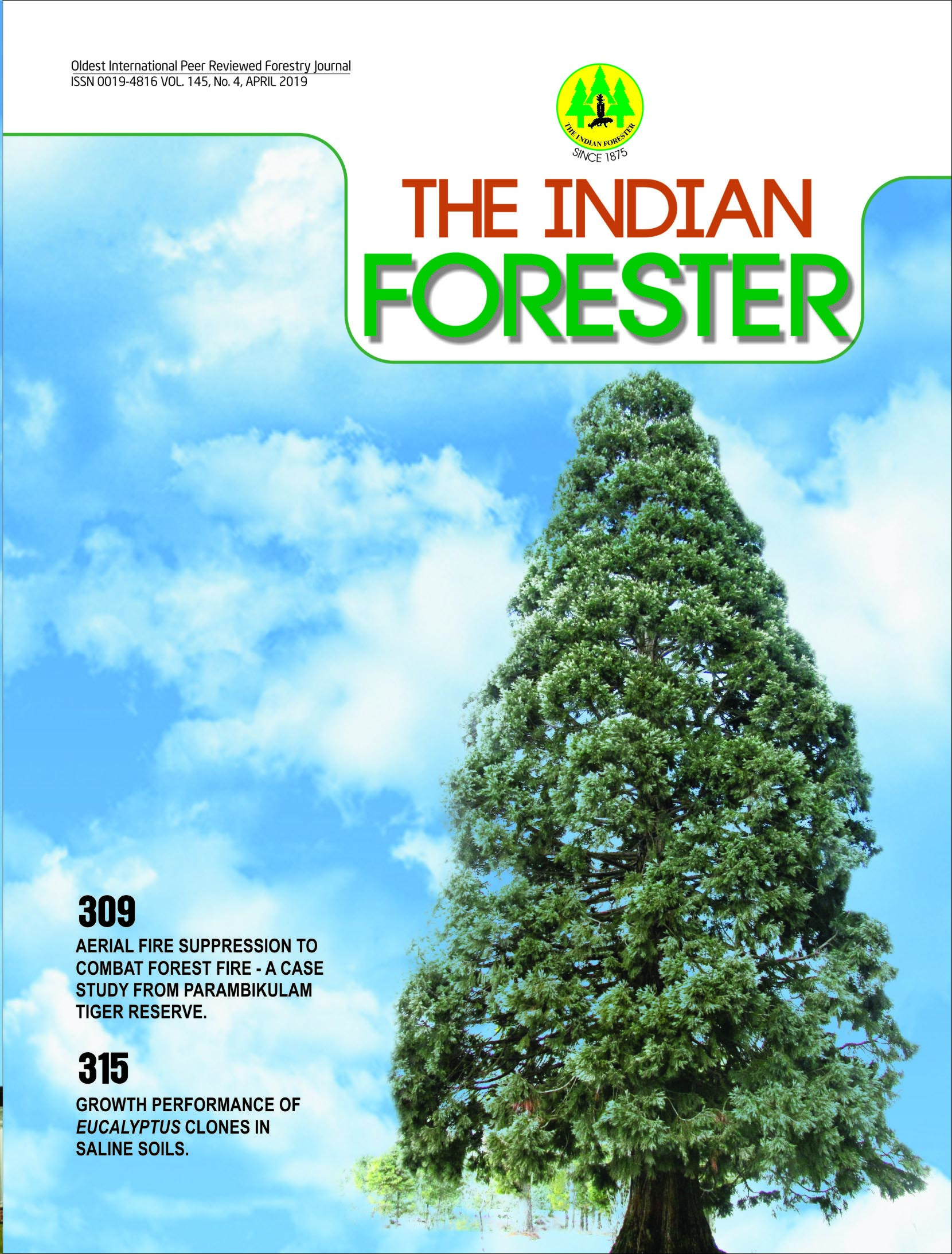Spider Fauna of Navdanya Biodiversity Farm, Uttarakhand, India
DOI:
https://doi.org/10.36808/if/2019/v145i4/145154Keywords:
Spider, Diversity, Navdanya, Farm, Guild.Abstract
Spiders are abundant in most terrestrial ecosystems forming one of the dominant macro-invertebrate predator groups. They are sensitive to a wide range of environmental factors including topography, season and other microhabitat factors. Considering their role in the ecosystem, in the present study, we attempted to investigate the diversity and composition of the spiders in Navdanya Biodiversity Farm, Uttarakhand, India. The habitat types that were selected for sampling are mango farm, herbal garden and other crop fields such as brinjal, tomato etc. Sampling was carried out in the month of June 2016. Spider specimens were collected randomly by using five semi quantitative techniques viz., ground hand collection, aerial hand collection, sweep netting, litter sampling and beating method. A total of 112 spider specimens representing 52 species coming under 33 genera belonging to 14 families were collected from Navdanya farm. Salticidae was the dominant family. High generic diversity was found in Salticidae reporting 9 genera. Oxyopes species were active in controlling insects that could be potential pests. A total of 7 feeding guilds were identified by the analysis of feeding behaviour of collected spiders. This study is also the first documentation of the spider fauna in Navdanya Biodiversity Farm, Uttarakhand, India.References
Alderwireldt M. (1989). An ecological analysis of the spider fauna (Araneae) occurring in maize fields, Italian ryegrass fields and their edges zones, by means of different multivariate techniques. Agriculture, Ecosystems and Environment. 27: 293-306.
Androw, D.A. (1991). Vegetational diversity and arthropod population response. Annual Review of Entomology, 36: 561586.
Bazzaz, F.A. (1975). Plant species diversity in old-field successional ecosystems in southern Illinois. Ecology 56, 485-488.
Bishop L. and Riechert S.E. (1990). Spider colonization of agroecosystems: mode and source. Environmental Entomology. 19(6): 1738-1745.
Coddington, J.A. and Levi, H.W. (1991). Systematics and evolution of spiders (Araneae). Annual Review of Ecology and Systematics, 22: 565-592.
Chetiya, P. and Kalita, D.K. (2012). Diversity and distribution of spiders from Gibbon Wildlife Sanctuary, Assam, Indian Journal of Arachnology 1: 5-15.
Ekschmitt, K., Wolters, V., and Weber, M. (1997). Spiders, carabids, and staphylinids: the ecological potential of predatory macro-arthropods. In: Benckiser, G. (Ed.), Fauna in Soil Ecosystems. Marcel Dekker, New York, 307–362 pp.
Ford. M. J. (1978). Locomotory activity and the predation strategy of the wolf spider Pardosa amentata (Clerck) (Lycosidae). Anim. Behav. 26:31-35.
Hawksworth, D.L. and Kalin Arryo M.T. (1995). Magnitude and distribution of biodiversity. In Global biodiversity assessment. (Ed.) Heywood, V.H. UNEP. Cambridge University Press, London. 200 pp.
Horner, N.V. (1972). Metaphidippus galathea as a possible biological control agent. J. Kans. Entomol. Soc. 45: 324–327.
Lack, D. (1969) The numbers of bird species on islands. Bird Study, 16:193–209.
Lockley, T.C. and Young, O.P. (1987). Prey of the striped lynx spider, Oxyopes salticus (Araneae, Oxyopidae), on cotton in the Delta area of Mississippi. J. Arachnol. 14, 395–397.
Muniappan, R., Chada, H.L., 1970a. Biological control of the greenbug by the spider Phidippus audax. J. Econ. Entomol. 63: 1712.
Muniappan, R. and Chada, H.L. (1970). Biology of the crab spider Misumenops celer. Ann. Entomol. Soc. Am. 63: 1718–1722.
Nagendra, H. and Gadgil M. (1998). Linking regional and landscape scales for assessing biodiversity. A case study from Western Ghats. Current Science 75(3): 264-271.
Noss, R.F. (1990). 'Indicators for monitoring biodiversity: a hierarchical approach', Conservation Biology, vol. 4: 355-364.
Nyffeler, M. and Benz G. (1987). Spiders in natural pest control: a review. Journal of Applied Entomology 103:321–329.
Nyffeler M. (2000). Ecological impact of spider predation: a critical assessment of Bristowe's and Turnbull's estimates. Bull Br Arachnol Soc 11:367–373.
Nyffeler, M., D.A. Dean, and W.L. Sterling. 1992. Diets, feeding specialization, and predatory role of two lynx spiders, Oxyopidae salticus and Peucetia viridans (Araneae: Oxyopidae), in a Texas cotton agroecosystem. Environ. Entomol. 21:1457–1465.
Simpson, E.H. (1949). Measurement of diversity. Nature 163: 688-688 pp.
Solanki R. and Kumar D. (2015). Spiders (Araneae) from Five Major Agro-Ecosystems of Jambughoda Village, Panchmahal District, Gujarat, India. International Journal of Science and Research, 4(9):958-961.
Sudhikumar A.V., Mathew M.J., Sunish E., Murugesan S. and Sebastian P.A. (2005). Preliminary studies on the diversity of spider fauna in Mannavan shola forest, Kerala, India. Acta Zoologica Bulgarica. Suppl. 1: 319-327.
Sunderland K. and Samu F. (2000) Effect of agricultural diversification on the abundance, distribution, and pest control potential of spider: a review. Entomologia experimentalia et applicata, 95: 1-13
Uetz, G.W. (1991). Habitat structure and spider foraging. In: Bell SS, McCoy ED, Mushinsky HR (eds) Habitat structure: the physical arrangement of objects in space. Chapman and Hall, London, 325–348pp.
Whitcomb, W.H. (1974). Natural populations of entomophagous arthropods and their effect on the agroecosystem. In: Maxwell, F.G., Harris, F.A. (Eds.), Proceedings of the Summer Institute on Biological Control of Plant Insects and Diseases. University Press of Mississippi, Jackson, MS, pp. 150–169.
World Spider Catalog (2018). World Spider Catalog. Version 19.5. Natural History Museum Bern, online at http://wsc.nmbe.ch, accessed on {10.12.2018}. doi: 10.24436/2
Young O. P. and Edwards G.B. (1990). Spiders in United States field crops and their potential effect on crop pests. J. Arachnol., 18:1-27.
Young, O. P. and T. C. Lockley. (1985). The striped lynx spider, Oxyopes salticus (Araneae: Oxyopidae), in agroecosystems. Entomophaga 30: 329-346.
Young, O. P. (1989). Predators of the tarnished plant bug, Lygus lineolaris (Heteroptera: Miridae): Laboratory evaluations. J. Entomol. Sci., 24: 174-179.
Downloads
Downloads
Published
How to Cite
Issue
Section
License
Unless otherwise stated, copyright or similar rights in all materials presented on the site, including graphical images, are owned by Indian Forester.





